Citing a recent and large increase in credit card fraud, Washington, DC-area grocer Giant Food says it will no longer allow customers to use credit cards when purchasing gift cards and reloadable or prepaid debit cards.
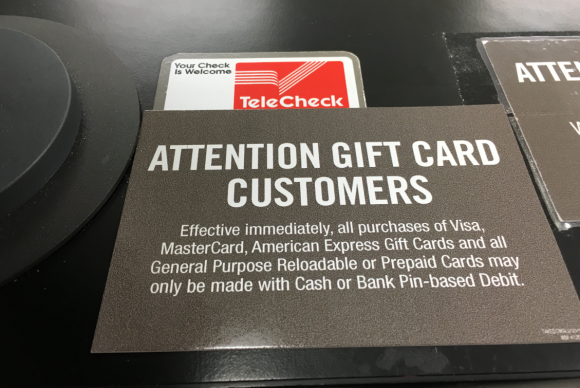
A new warning sign at Giant Food checkout counters. Giant says the warning was prompted by a spike in credit card fraud.
I had no idea this was a new thing at Landover, Md.-based Giant, which operates 169 supermarkets in the Washington, D.C. metro area. That is, until I encountered a couple of large new “attention” stickers in the checkout line at a local Giant in Virginia recently. Next to the credit card terminal were big decals with the warning:
“Attention Gift Card Customers: Effective immediately, all purchases of Visa, MasterCard, American Express Gift Cards and all General Purpose Reloadable or Prepaid Cards may only be made with Cash or Bank Pin-based Debit.”
Asked for comment about the change, Giant Food released a brief statement about the policy change that went into effect in March 2016, but otherwise didn’t respond to requests for more details.
“Giant has recently made a change in procedures for purchasing gift cards because of a large increase of fraudulent gift card purchasing,” the company said. “Giant will now accept only a Bank PIN-based debit card or cash for all VISA, MasterCard, and American Express gift cards, as well as re-loadable and prepaid gift cards. This change has been made in order to mitigate potential fraud risk.”
It’s not clear why Giant is only just now taking this basic anti-fraud step. Card thieves love to pick on grocery and convenience stores. Street gangs involved in card fraud (and they’re all involved in card fraud now) often extract money from grocery, dollar and convenience stores using “runners” — low-level members who are assigned the occasionally risky business of physically “cashing out” counterfeit credit and debit cards.
One of the easiest ways thieves can cash out? Walk into a grocery or retail store and buy prepaid gift cards using stolen credit cards. Such transactions — if successful — effectively launder money by converting the stolen item (counterfeit/stolen card) into a good that is equivalent to cash or can be easily resold for cash (gift cards).
I witnessed this exact crime firsthand at a Giant in Maryland last year. As I noted in a Dec. 2015 post about gift card fraud, the crooks caught in the process of these cashout schemes usually are found with dozens of counterfeit credit cards on their person or in their vehicle. From that post: Continue reading




 US-CERT cited
US-CERT cited 
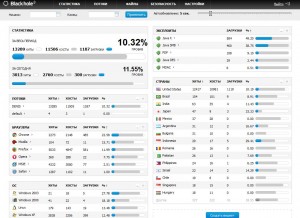
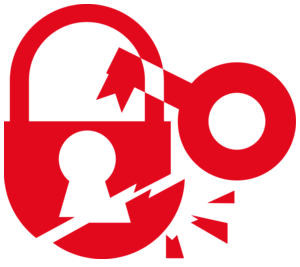

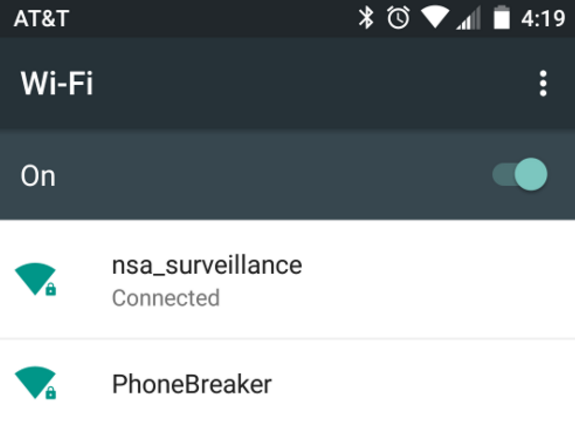
 Adobe said a “critical” bug exists in all versions of Flash including Flash versions 21.0.0.197 and lower (older) across a broad range of systems, including Windows, Mac, Linux and Chrome OS. Find out if you have Flash and if so what version by visiting
Adobe said a “critical” bug exists in all versions of Flash including Flash versions 21.0.0.197 and lower (older) across a broad range of systems, including Windows, Mac, Linux and Chrome OS. Find out if you have Flash and if so what version by visiting 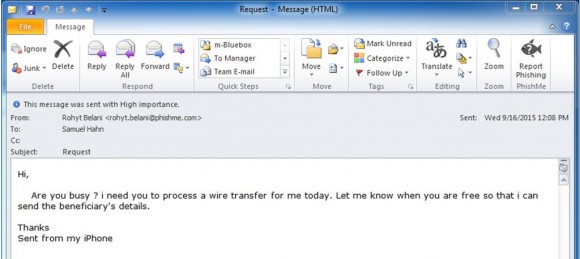


 Earlier this week, a prominent member of a closely guarded underground cybercrime forum posted a new thread advertising the sale of a database containing the contact information on some 1.5 million customers of Verizon Enterprise.
Earlier this week, a prominent member of a closely guarded underground cybercrime forum posted a new thread advertising the sale of a database containing the contact information on some 1.5 million customers of Verizon Enterprise.